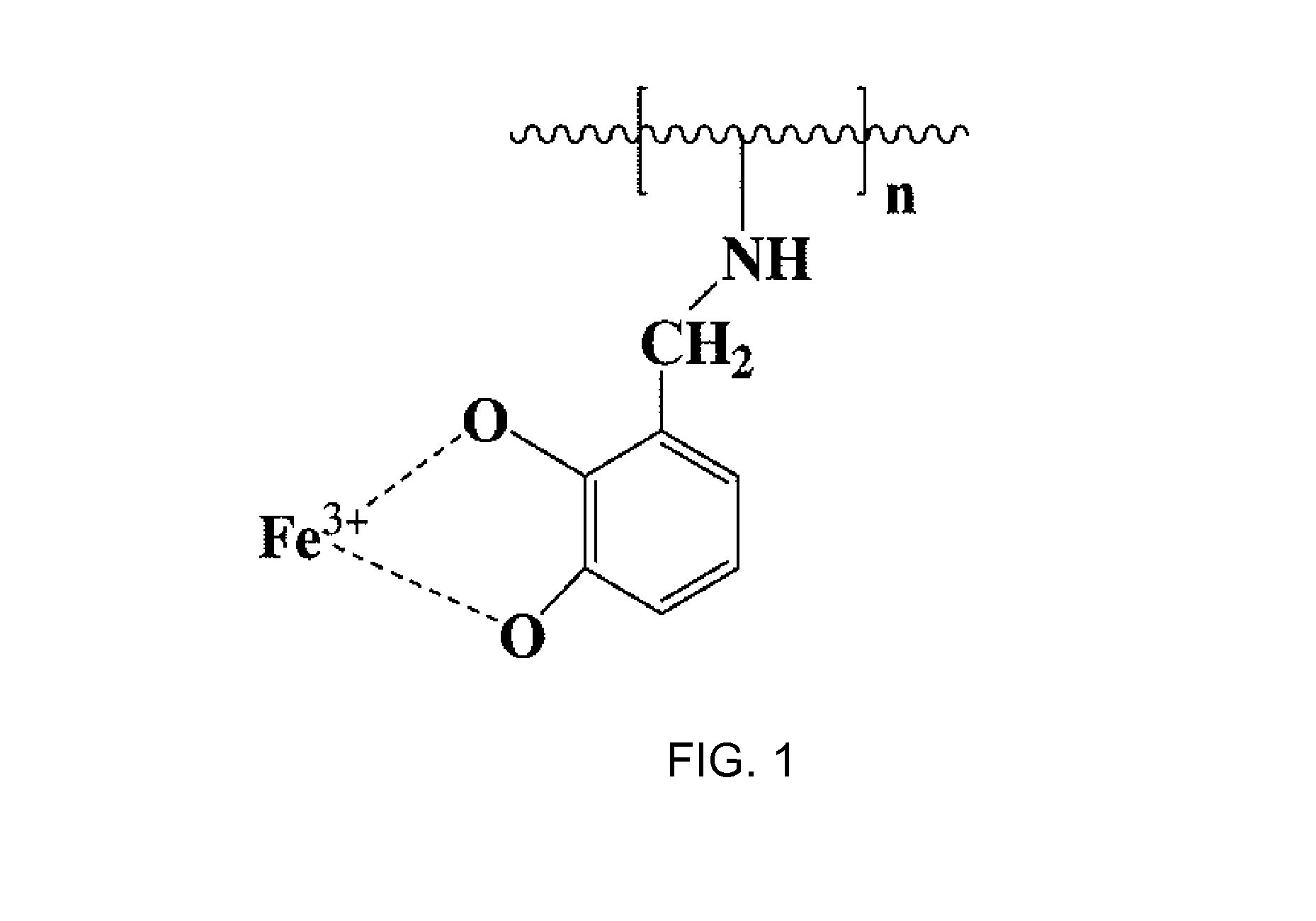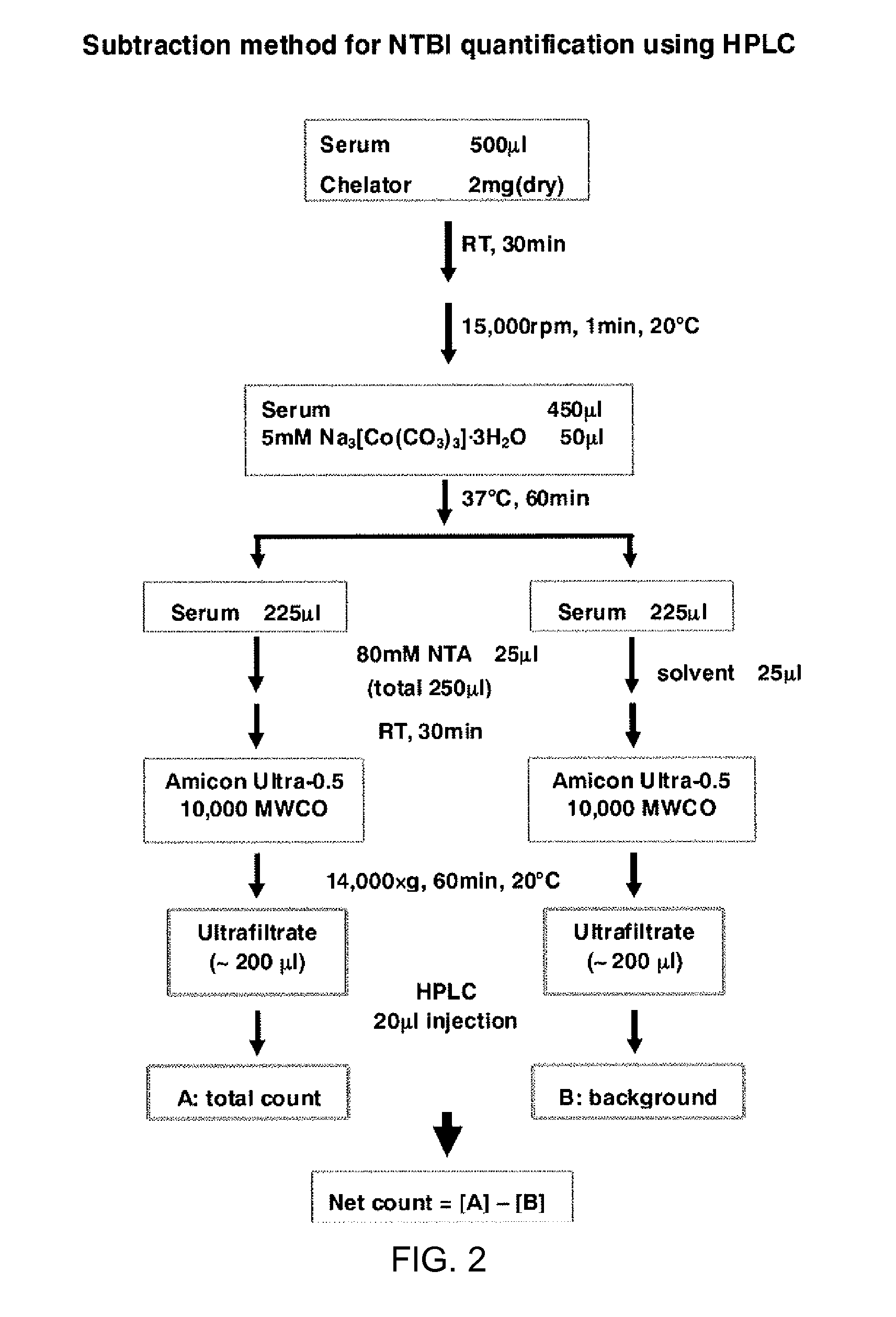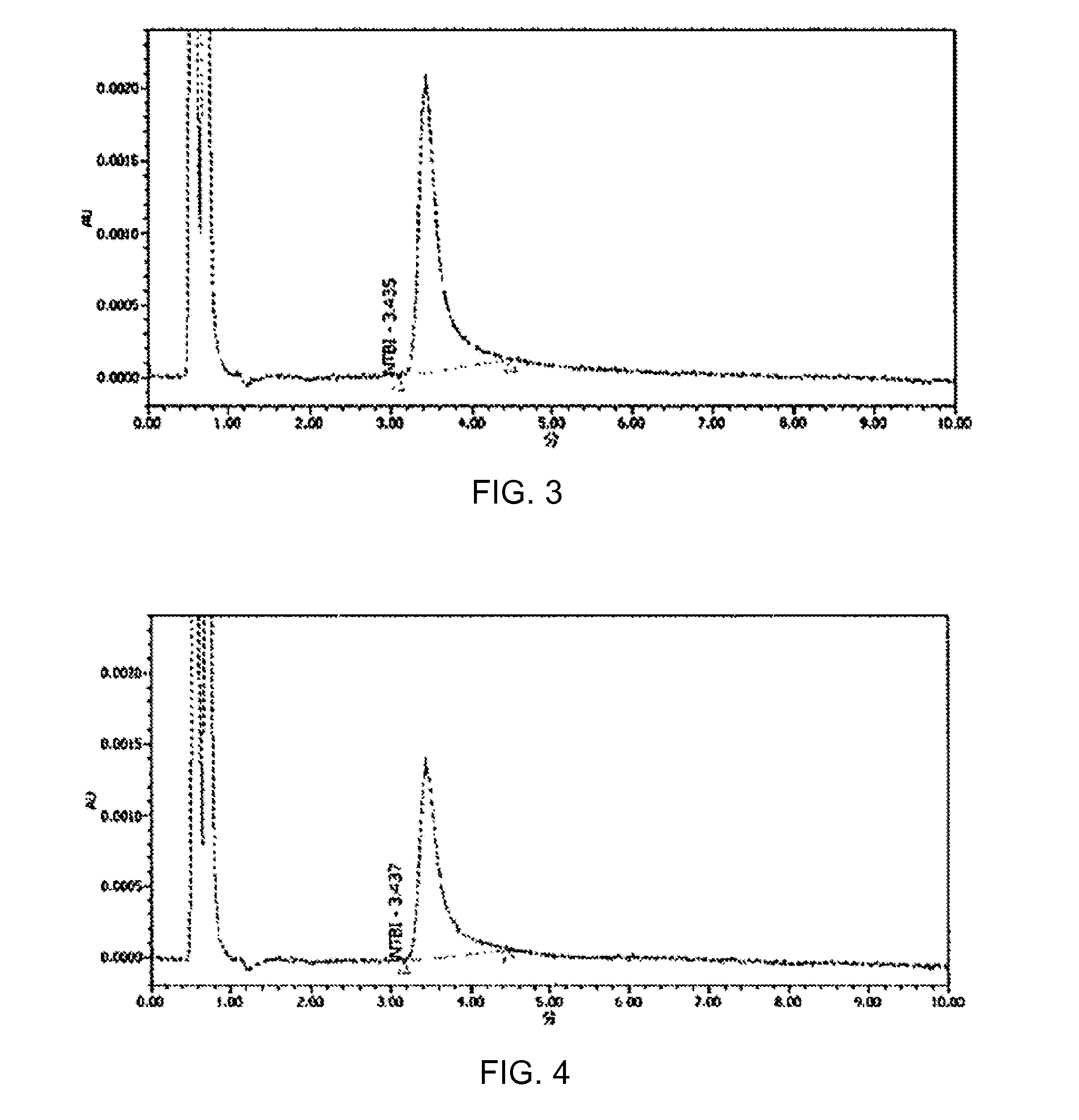Polymeric iron chelating agent
- Summary
- Abstract
- Description
- Claims
- Application Information
AI Technical Summary
Benefits of technology
Problems solved by technology
Method used
Image
Examples
example 1
[0060]700 mg of chitosan (NACALAI TESQUE, INC., derived from crab shells) and 300 mg of 5-formylsalicylic acid (Tokyo Chemical Industry Co., Ltd.) were added to a mixed solvent consisting of 50 ml of 5% acetic acid and 50 ml of methanol. 3 g of sodium borohydride (NACALAI TESQUE, INC.) were gradually added to the resulting gelatinous solution until a crystalline precipitate formed. Once the precipitate formation was ceased, the precipitation was filtered by suction and washed with methanol. After drying the product, it was further subjected to vacuum drying to obtain 700 mg of a polymeric iron chelating agent (PC-Carb2). The chemical formula of PC-Carb2 is shown below. On the basis of the feed ratio, ½ of the amino groups on chitosan are estimated to have been reacted with 5-formylsalicylic acid and substituted with the chelate.
example 2
[0061]The same procedure as Example 1 was carried out using 500 mg of the chitosan of Example 1 and 300 mg of 2,3-dihydroxybenzaldehyde (Tokyo Chemical Industry Co., Ltd.) in place of 5-formylsalicyclic acid to obtain 700 mg of polymeric iron chelating agent (PC-Cate1) in the form of a crystalline precipitate. The chemical formula of PC-Cate1 is shown below. On the basis of the feed ratio, ½ of the amino groups on chitosan are estimated to have been reacted with 2,3-dihydroxybenzaldehyde and substituted with the chelate.
example 3
[0062]A polymeric iron chelating agent (PC-Carb1) was obtained in the form of a crystalline precipitate according to Example 1 by using 5-methyl-3-formylsalicylic acid in place of 5-formylsalicylic acid. The chemical formula of PC-Carb1 is shown below. On the basis of the feed ratio, ½ of the amino groups on chitosan are estimated to have been reacted with 5-methyl-3-formylsalicylic acid and substituted with the chelate.
PUM
| Property | Measurement | Unit |
|---|---|---|
| Time | aaaaa | aaaaa |
| Force | aaaaa | aaaaa |
| Force | aaaaa | aaaaa |
Abstract
Description
Claims
Application Information
 Login to View More
Login to View More - R&D
- Intellectual Property
- Life Sciences
- Materials
- Tech Scout
- Unparalleled Data Quality
- Higher Quality Content
- 60% Fewer Hallucinations
Browse by: Latest US Patents, China's latest patents, Technical Efficacy Thesaurus, Application Domain, Technology Topic, Popular Technical Reports.
© 2025 PatSnap. All rights reserved.Legal|Privacy policy|Modern Slavery Act Transparency Statement|Sitemap|About US| Contact US: help@patsnap.com



